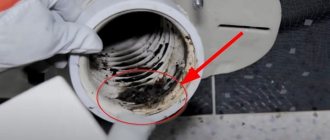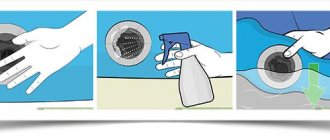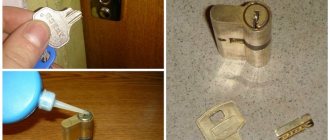Resin is an amorphous substance that can melt at high temperatures and quickly harden when it drops. One of the main properties of resins, both natural and synthetic, is their ability, when cooled, to be fixed to almost any surface, forming a waterproof layer. This quality of this product has long been used by people in various fields of activity: they impregnate the bottom of boats, tar roofs, etc. However, it can cause a lot of trouble if viscous droplets get on a person’s skin and clothing or on the windshield of a car. How to wash the resin depends on its type and composition: natural and artificial substances behave differently under the same conditions.
How to remove resin from different surfaces?
- A pleasant walk with the children in the forest, playing with the dog in the park, a family trip out of town or a lazy day in the garden: such relaxing ways to spend your free time may not be very pleasant, or rather they may lead to fresh stains, including from resin that is difficult to remove. from fabrics, cars or leather. Unpleasant consequences may remain after carrying out repairs, waterproofing work, or fixing a bathroom in a cottage, apartment or office space.
- When we notice tar dirt on our pants, sweater or other surface, the thought arises that it will remain there forever, and we will only have to throw away our favorite thing or take the car to a service center. Fortunately, this is just a misconception, a myth. The resin does not damage the structure of the material, so it can be cleaned, leaving virtually no traces of dirt. Stains can be removed without having to get rid of your favorite clothes or spend a decent amount of money on services to remove dirt from your car.
- You need to act immediately so that the substance does not have time to penetrate deep into the tissue. You only need to know a few useful facts and methods, which will be discussed below, and follow the advice given by ECU. For cleaning, you will need the chemical properties of substances that are found in every home.
Why is it important to clean stains quickly?
As I said above, the resin has the ability to penetrate very quickly into the fiber structure of the fabric. It poses a serious threat not only to jeans or shirts, but also to pots and other kitchen utensils.
Moreover, the resin can also be of artificial origin. It hardens at room temperature in just a few seconds. These are epoxy resins that are used to fix certain parts to each other.
Due to its viscosity and ability to set quickly, measures should be taken to clean contaminated products immediately. Otherwise, you will have to put up with the remnants of the stain or simply throw away the stained item. Only timely intervention can prevent the process of resin penetration into the structure of the object.
It is important to understand that the frozen resin stain itself can be removed without much difficulty. But it will leave a visible trace of a dark color, which will inevitably ruin the clothes.
Chemical composition and applications of resins
- Resin is a substance produced in some plants, especially conifers. It occurs in the intercellular spaces or resin ducts, and is produced by the surrounding secretory (resin-bearing) cells. Resin is used to protect the trunk and tree wounds. The color depends on the type of wood from which it was obtained.
- Resins are insoluble in water and are amorphous or partially crystalline mixtures of non-volatile organic compounds, terpenoids (resin acids and their derivatives) and phenolic compounds.
- Resin is extracted from living trees by resin selection (the process of obtaining a substance from trees by cutting off the bark and collecting the flowing liquid in special containers), from felled trees, branches, and pine needles. Resins have very different uses, depending on the specific type. Some are used in pharmacology in the form of drugs or ingredients for their production. The rest are used to produce natural rosin, shellac and turpentine. They are used to produce paints and varnishes.
- Resin is a raw material used in the production of cosmetics, plastics, undersea electrical cable insulation and many other products. In Siberia, the resin of these species of Siberian and Daurian larch is extracted for chewing and, according to methods, disinfects the oral cavity. Fossil resin (amber), widely used in jewelry.
other methods
When solving the problem of how to remove resin from clothes, you should resort to one of the following means:
Having looked at how to clean tar stains from clothes, it is worth noting that the method should be selected depending on the type of material.
- for delicate products, the method with vegetable oil and dishwashing detergent is suitable;
- It is better to remove resin from fur and suede clothing with alcohol;
- woolen fabric is “not afraid” of turpentine, but if it is light, it is better to use soap and alcohol;
- velvet, velor, acetate, silk can be treated with ether and alcohol or potato starch paste;
- bleaches and alkalis are allowed to be used only for white things;
- acetate silk cannot be wetted with acetone and nail polish remover;
- some types of paints are destroyed by alcohol and acids;
- Do not use gasoline on synthetics.
General tips for treating tar stains:
- Clean fabric with flammable substances away from sources of fire.
- Things need to be processed from the inside out.
- First, you should test the product on an inconspicuous area.
- The resin stain should be cleaned from the edge to the middle to prevent it from increasing in size.
- It is advisable not to rub the resin, but to make blotting movements.
- It is better to apply chemicals to small stains with a cotton swab (pipette).
- When final washing the product, it is advisable to use conditioner to get rid of the specific odor.
- It is recommended to air dry things.
A resin stain is not a reason to give up your favorite thing. It can be removed using improvised means. Of the methods described, you should first choose the least aggressive one. And if it doesn’t work, then you can continue the experiments. In any case, it is important to consider the type of fabric, as well as observe personal safety measures.
Tweet
Sometimes dishes lose their beauty and shine as a result of long-term use, and sometimes it happens that cleaning is necessary due to our carelessness - when the pan is burnt and the bottom is covered with soot, which cannot be washed in the usual way.
- As a rule, before cleaning a burnt, old or simply very dirty pan, we soak it in a soapy solution and then try to wash it with brushes and hard sponges. Often this procedure solves the problem. But what to do in particularly difficult cases, when soaking does not help or when you just want to get through the routine as quickly as possible? From this article you will learn 8 tricks on how to clean pots as quickly as possible and with minimal effort using improvised and special means.
Before you get started, try to understand what material your pan is made of. After all, metals react differently to cleaning products. Thus, salt is harmful to stainless steel, acid is harmful to enamel, soda is harmful to aluminum, and any abrasives are harmful to all types of non-stick coatings. Read more about the rules for caring for pots depending on the type of material at the end of the article.
Types of natural resins
- Balata from plants of the sapinaceae family.
- Baltic amber is a fossil resin from coniferous trees.
- Damara - from trees of the genus Lady shorea.
- Gutta-percha from plants of the saponidae family
- Hashish is the dried resin of cannabis inflorescences.
- Lacquer from lacquer trees.
- Myrrh from the embalmer's myrrh.
- Sandarak from trees of the cypress family.
- Pine resin from Scots pine
In industry and construction, synthetic resins are used. Their composition is completely different, unlike natural resins. These resins are used for waterproofing work, to protect surfaces from moisture. When laying and strengthening the foundations of buildings. When working in sanitary facilities. The floors and bottoms are coated to prevent moisture and leakage. Resins contain polymers, binders, hardeners (one of them, for example, diethylenediamine), as well as various fillers.
Tools needed to remove tar and bitumen
- To quickly and effectively clean oil, tar, bitumen and liquid rubber, Antivandal Himitek is used. After using it, there are no oil stains or sharp, unpleasant odors. The time it takes for the composition to act is 15-30 minutes.
- The substance SSR Solvent Stain Remover is quite aggressive; when working with it, you will need protective gloves, glasses or a screen. It is applied to problem areas using a spray, and after 5 minutes the area is wiped and the active substance is washed off. The operation can be repeated several times, but keep an eye on how the fabric behaves (whether it deteriorates).
- Wurth HEK 5000 will remove resin from hard surfaces. Suitable for cleaning fabrics and removing resins of natural and synthetic origin.
- Do not forget to make sure that the chosen product will not discolor or damage the fabric - it is best to test a small amount of the product on an inconspicuous place. Be careful with delicate fabrics.
Equipment and devices for resin removal
- Truvox Kristal and PRIMASTER COMBI brushes will help remove large quantities of bulk stains from concrete, tiles and other hard surfaces. Together with the funds, they will quickly solve the problem.
- If the contamination is too large, the brushes may not cope with the task (or the process will take a lot of time). Rotors Karcher BDS 33/180 with Adv, Karcher BDS 43/Orbital C, Cleanfix R44-120 will come to the rescue. Orbital brushing machines PD 95A or Biltema can handle resin or bitumen stains well; they can be used to work in several directions (horizontal and vertical).
What not to use
Fossilized resin is practically impossible to clean, and therefore you should not let things get to this state. It is recommended that you know how to remove resin from pine and other trees from clothes at home. This is required in order not to make stupid mistakes, after which things will be irrevocably damaged.
It is highly undesirable to throw things with fresh resin into the washing machine, since it can only cope with ordinary contaminants, such as dirt, but the resin has its own unique composition that will not allow you to get rid of it so easily. Without the use of solvents, neither soaking nor washing will help get rid of this kind of contamination.
In no case should you rub the resin, since in this case it will only penetrate deeper into the fibers of the fabric and it will be almost impossible to remove it, and therefore you should not take such risks. Resin embedded in the fabric complicates the work of cleaning it, and on light-colored fabrics such a stain may not disappear at all after cleaning using any of the methods listed below.
It is worth understanding that if you do not want to use more aggressive cleaning agents, but want to use more gentle methods, such as soaking in oil and soda, you should not hope for a quick result, since this is impossible. This will likely take many hours, if these methods help at all.
Traditional methods of dealing with resin
You need to start from the first method, moving down if the previous method did not help. You need to place a paper towel under the fabric with the stain to prevent it from spreading onto your clothes.
- Tea oil. It is safe for fabrics; apply the product with a cotton pad or shelf, covering the stain completely without touching the area around it. Send the item to the wash with a pre-soak to remove the oil stain.
- Vinegar. Mix it with water in a ratio of 1:3. Soak the area with the resin in the liquid and leave for half an hour. Wash or rinse, removing any remaining vinegar.
- Acetone, kerosene, and various paint thinners will also help in removing resin from hard surfaces. They can also be used to remove resin from fabrics. But an unpleasant odor may remain that cannot be removed by anything.
- Turpentine. Dilute with alcohol 1 to 3. Moisten a cotton pad with it and wipe the stain using a soft toothbrush, wait half an hour.
- Washing powder. Create a paste by mixing washing powder (not gel) with water 1 to 1. Apply to the problem area, after half an hour, rinse with water or wash the product as indicated on the label.
After washing, it is not advisable to use a dryer; too high a temperature can make the stain permanent. If the resin is still visible on the clothing, move on to testing the next method. Laundry soap will help remove any remaining oil.
Specialists from the Unified Cleaning Center company recommend using resin cleaning products in a combined form, in a complex, in order to quickly achieve the desired effect.
How to get pine nuts from cones
Cedar is a fairly rare plant, so buyers usually see expensive nuts already in a shelled state. However, if you manage to get a cone, it doesn’t hurt to familiarize yourself with the information on how to properly remove the seeds from it. At this stage, it is better to use gloves so as not to have to look for a way to wash the resin from the skin of your hands later. If the cones are ripe, then you won’t have to make much effort. Just tap it on the side of the pan and some of the fruit will fall out on its own.
But the option described above, which involves heat treatment of the cones, is preferable. Firstly, all the resin will be removed immediately, and secondly, after this you will not have to further process the nuts themselves to soften the shells. After cooking, it will become thin and easy to remove.
Did you know? The tallest cedar is the Himalayan cedar. It reaches a height of 50 m.
Once the pine cone is cleaned and the nuts are collected, you need to remove the shell to get to the tasty kernel. This can be done using available household tools. Additional processing to soften the shell will help make your work easier.
Video: Pine nut extraction
Options for pre-processing nuts before cleaning:
- Immerse the nuts in boiling water for 20 minutes, then place them on a towel, let the water drain and begin shelling.
- Place the product in a plastic bag, release the air from it, and tie it. Place in the freezer for 2-3 hours. After the specified time, remove the nuts and peel them. When using this method, the shelf life of processed fruits will be no more than 1 week.
- Preheat the oven to +150°C. Place the nuts on a baking sheet and hold at the specified temperature for about 15 minutes, periodically monitoring the process. If the nuts acquire a golden color earlier, they should be immediately removed from the oven, otherwise the kernel will be tasteless.
- Place the nuts in a hot frying pan and fry for 3 minutes, stirring constantly. Then immediately transfer the product to a container of ice water for 1 minute. Place in a colander, let drain, and place on a paper towel.
By choosing one of the above methods, peeling nuts is very simple. The easiest way is to put them in a bag, then remove the air from the package and tie it. Then you should run a rolling pin along the surface of the bag, as if you were rolling out dough. After this, you can untie the bag, take out the contents, sift it from the shell and enjoy the delicious cedar kernels.
Did you know? In dishes made of cedar wood, milk does not sour for a long time.
Peeling pine cones to remove the nuts is quite a difficult task. But the result is worth it. The nutty subtle aroma and taste will leave an unforgettable impression.
How to remove tar from skin?
- After cleaning resin from clothing, sticky parts of the substance may remain on your hands. To cleanse the skin, use vegetable oil for frying. Some people use coconut oil or peanut butter, for example, but it doesn't really matter which oil you choose. Apply a small amount to your hand, scrub vigorously, and wash your hands with regular soap.
- If you still have sticky traces of resin on your hair after dealing with stains, oil can also help. After applying to hair and massaging, wait about ten minutes and then comb the softened resin with a thick comb. After removing clumps, wash your hair with a clarifying shampoo.
Solvents, gasoline, alcohol
In search of an answer to how to remove pine resin from clothes, it makes sense to use one of the preparations - alcohol, turpentine, purified gasoline (sold in hardware stores), nail polish remover, acetone, white spirit. Stages of work:
- Soak a cotton swab generously in one of the listed substances.
- Wipe off the resin stain.
- Wait 15-20 minutes.
- Rinse the item.
- Wash with powder - first by hand and then in the machine.
- Dry in the fresh air.
For delicate fabrics, it is better to use a more gentle method:
- Combine laundry (baby) soap with purified gasoline (kerosene) in equal parts.
- Apply the mixture to the stain.
- After 1 hour, wash and rinse thoroughly.
The listed substances are characterized by a pungent odor, as well as an aggressive effect on human skin and mucous membranes. Processing should be carried out with gloves and a mask in a well-ventilated room.
How to remove tar from a car?
Substances such as tar, bitumen, asphalt, oil or paint dust cannot be removed from a car's paintwork by regular washing. To maintain the varnish in good condition, it is necessary to constantly remove all contaminants. Below is information on how to safely remove resin from your car. When it is not recommended to remove traces of resin from a painted surface yourself:
- when large stains of resin are visible on the surface of the car;
- if you are not confident in your actions;
- if the surface is not perfectly smooth, and resin and metal removers do not cope with contamination.
Method 6. Cleaning with citric acid
If you don’t have vinegar at home, clean a burnt pan or dishes with limescale using citric acid. Like vinegar, citric acid is contraindicated for enamel cookware.
Instructions:
- To clean the pan, boil water in it (you don’t need a lot, the main thing is that the water covers the smoke), add 2 tbsp. spoons of citric acid and boil the resulting solution for another 15 minutes.
- As the burnt material softens, scrape it off with a spatula. Finally, wash the burnt bottom as usual.
Technology for removing tar and bitumen from a car.
- The first step is to thoroughly wash your car at a self-service car wash or have it cleaned by professionals.
- Horizontal elements of the car are especially susceptible to the effects of resin; often the resin is not visible to the naked eye, so after washing the car you should make sure that the hood, roof, trunk door, front and rear windows are smooth and free of dirt.
- For cleaning the car body or some of its individual parts, we recommend professional and proven products Grass Antibitum, SSR Solvent Stain Remover, G502 Buz Point, Amway LOC and others.
- It is necessary to apply these compositions in doses to a cloth, sponge, microfiber, rub the chemical into the surface and dissolve. If the resin stain has a high density, then you can soak the dirt from a spray bottle to speed up the process of dissolving the stains.
- After applying the product, wait a few minutes until the resin stains dissolve. If the trace is large, you can reapply the drug after some time to speed up dissolution. When the resin has softened significantly, apply a small amount of the product to a microfiber or cotton pad, and then carefully remove the dirt. After removing the stain, rinse the area again. This is necessary to remove residual solvent.
- And never use rough or abrasive materials to remove resin, such as metal scrapers. They can damage the paintwork.
- Fresh stains must be removed immediately. Resin that remains on the surface of the vehicle for a very long time, exposed to high temperatures and changing weather conditions, can seriously damage the paintwork.











